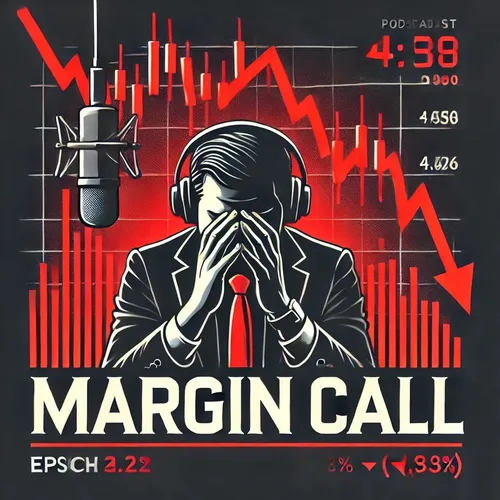Margin calls, short squeezes, and leveraged trading: the volatile heart of market dynamics.
- Author
- Quiet. Please
- Published
- Thu 17 Jul 2025
- Episode Link
- https://www.spreaker.com/episode/margin-calls-short-squeezes-and-leveraged-trading-the-volatile-heart-of-market-dynamics--67012311
Margin calls, short positions, and the pressure faced by traders when these positions go wrong are foundational aspects of understanding market volatility and risk management. When investors engage in margin trading, they're essentially buying securities with funds borrowed from a broker, using their existing securities as collateral. This leveraging of a position amplifies both potential gains and losses. If the value of the portfolio drops significantly, brokers may issue a margin call, requiring the investor to deposit additional capital to restore the margin balance. Failure to respond often results in forced liquidation of holdings to cover the debt, according to IC Funded's educational breakdown of margin and leverage.
Short selling, by contrast, is the act of selling securities the trader does not own by borrowing them, betting the price will fall. If it does, the trader can buy the stocks back at a lower price, return them to the lender, and pocket the difference. The risk with shorting is theoretically unlimited—a stock price can keep rising indefinitely while a short-seller's losses mount. This risk is exacerbated when the market turns sharply upward, trapping those with large short exposures.
During periods of sharp rallies or unexpected positive news, heavily shorted stocks can experience so-called "short squeezes." In these scenarios, rising prices force short sellers to buy back shares to limit mounting losses, which in turn pushes prices even higher. As Seeking Alpha reported about a sharp market rally, a drop in April led to a significant wave of margin calls, forcing both retail investors and hedge funds to cover their positions under immense pressure.
The mechanics of margin calls kick in during sharp price moves against leveraged traders. If an investor shorting a stock sees that security's price soar, the losses rapidly erode the equity in their account. Brokers, seeing the collateral value diminish, will demand either more cash or immediate closure of positions to protect themselves from the risk of insolvency by the investor. This chain reaction of forced buying can dramatically increase volatility and has played a role in notable market events.
The U.S. Securities and Exchange Commission recently documented a case where an individual's unprofitable personal trading led to substantial margin calls, highlighting just how quickly mounting losses on short positions or leveraged trades can get out of control. The brokerage house always has first priority to recover its loan from the client, triggering liquidations when those loans are at risk due to market movement.
Derivatives like options also involve margin and can magnify these effects. Options have embedded leverage, so even a small adverse move in the underlying asset can wipe out an investor’s collateral entirely. Unlike outright shorting, certain complex strategies such as fence options or collars are designed to define a range of risk, but if volatility spikes beyond expectations, uncovered positions or excessive leverage can quickly spiral into crisis.
Ultimately, margin calls serve as a failsafe for brokers but can be ruinous for traders caught on the wrong side of a move, especially short sellers who underestimate the speed and scale of a reversal. With each successive rally in a heavily shorted security, the risk of cascading forced covers grows, playing out visibly in recent market surges and notable short squeezes.
Thanks for tuning in, and don’t forget to subscribe. This has been a Quiet Please production, for more check out quietplease.ai.
For more http://www.quietplease.ai
Get the best deals https://amzn.to/3ODvOta
